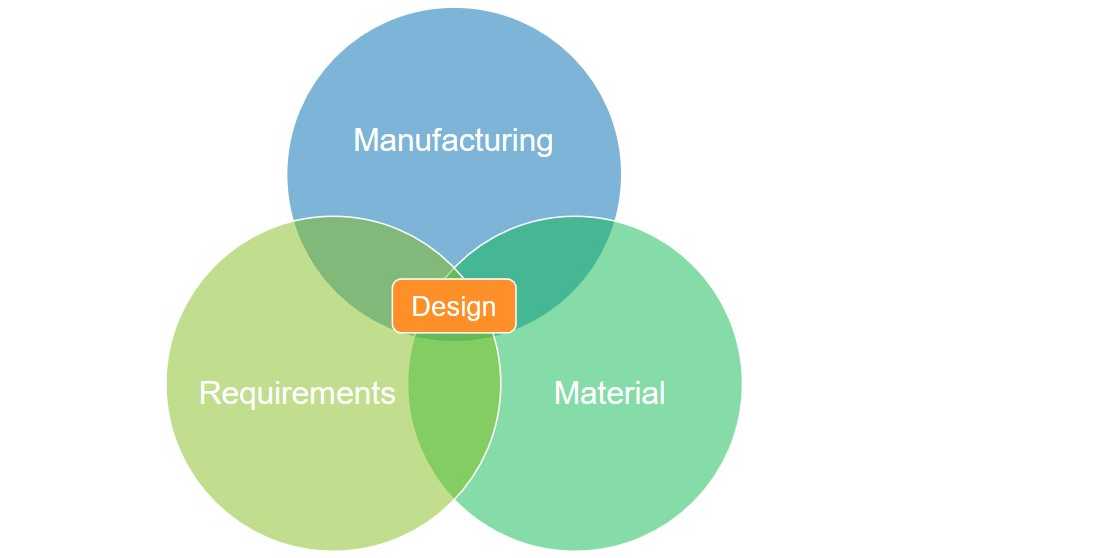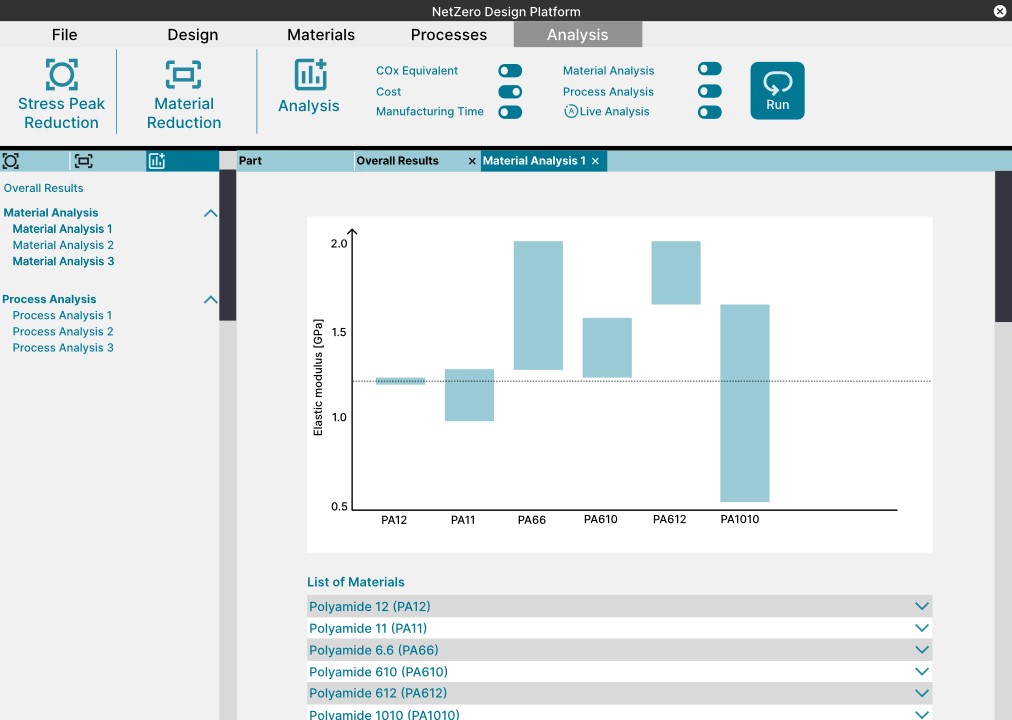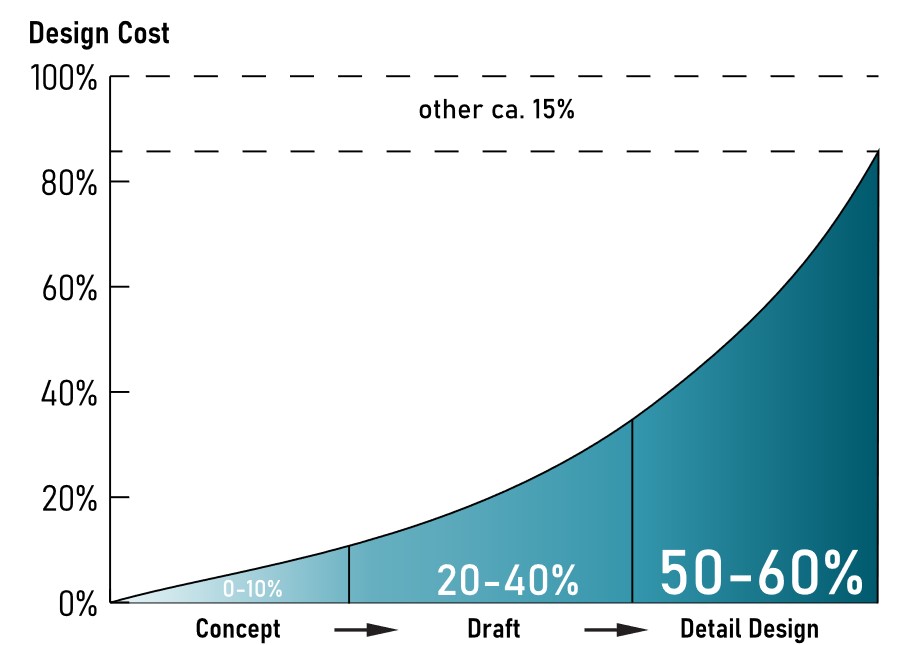Automated Eco Design Tool
Sustainable product design is a complex challenge that is becoming increasingly important. We are developing design tools to help overcome these complexities and accelerate the transition to more sustainable products.
Variable Product Design

Today, product designs are often created for a defined choice of materials and manufacturing processes. This leads to high costs in an iterative development process, as the designs have to be adapted manually if the material or manufacturing process is changed. We envision a design tool that enables a variable product design that can be easily adapted for different material and manufacturing process choices. Ultimately, this will help to reduce the economic barriers to designing for more sustainable materials and processes.
Material and Process Selection Tool

A major challenge in product development is that designers often lack a full understanding of the environmental impact of design decisions external page [1]. As a result, it is difficult for designers to have an objective design basis for creating sustainable product designs. We want to address this challenge by developing a material and process selection tool. This tool will provide estimates of economic and environemental aspects such as costs, CO2 estimations, and recyclability analyses. It will also suggest alternative materials for given requirements to optimize economic and environmental factors. And to improve the user experience and acceptance, it will be embedded directly into the design platforms.
Design Co-Pilot

Providing designers with guidance directly in their design environment is another approach to creating more sustainable design. This allows the reuse of pre-validated design features to ensure, for example, efficient recycling. These features are automatically adapted to the selected material properties, making it easy to create designs for different materials. It can also provide direct feedback on the designs being created, helping to avoid design flaws that would lead to stress peaks and ultimately reduced product life. Overall, this tool will help to reduce design time making it more financially attractive to evaluate sustainable design options.
For more information please contact Philip Wolf or Julian Ferchow.
Sources:
[2] Ehrlenspiel, K. (2009). Integrierte Produktentwicklung: Denkabläufe, Methodeneinsatz, Zusammenarbeit (4th ed.). Hanser.